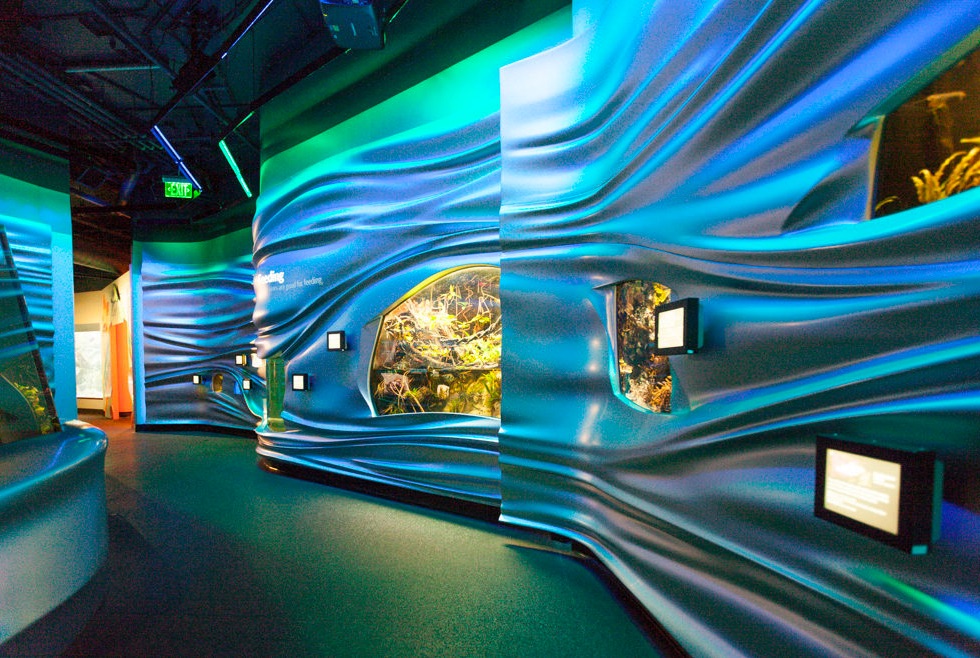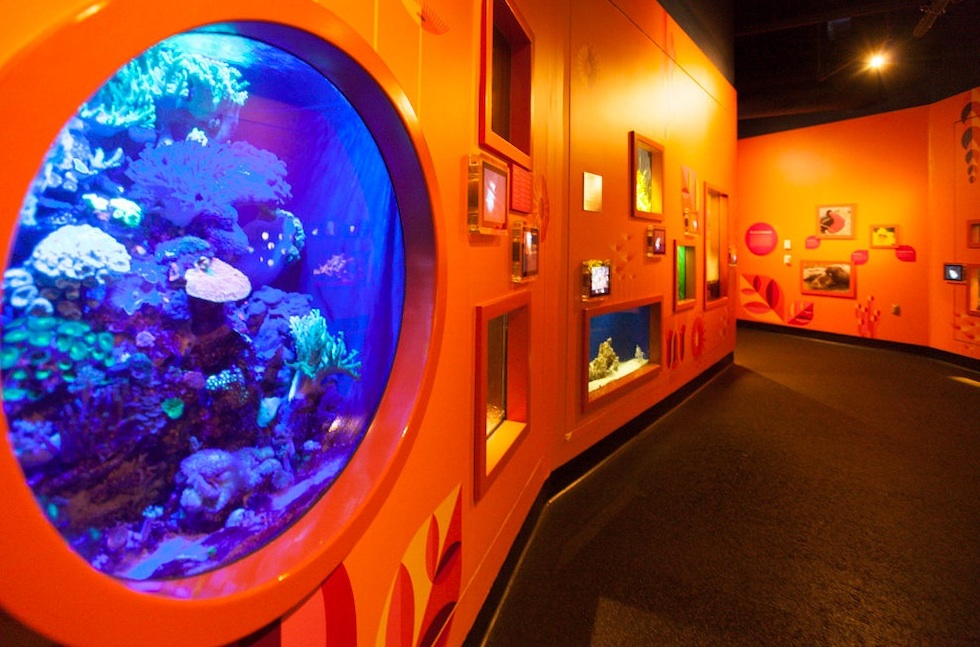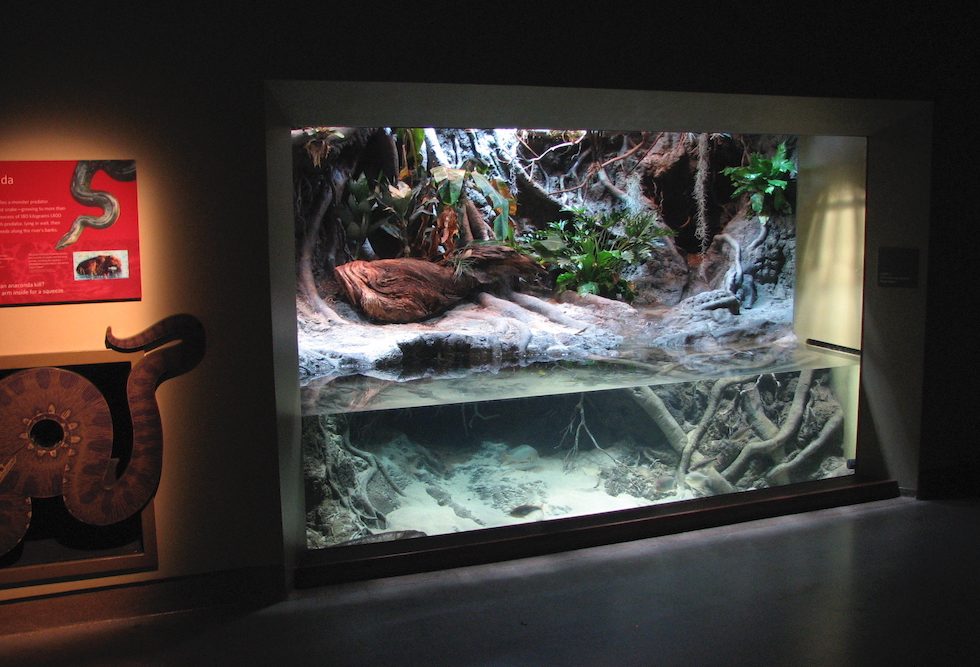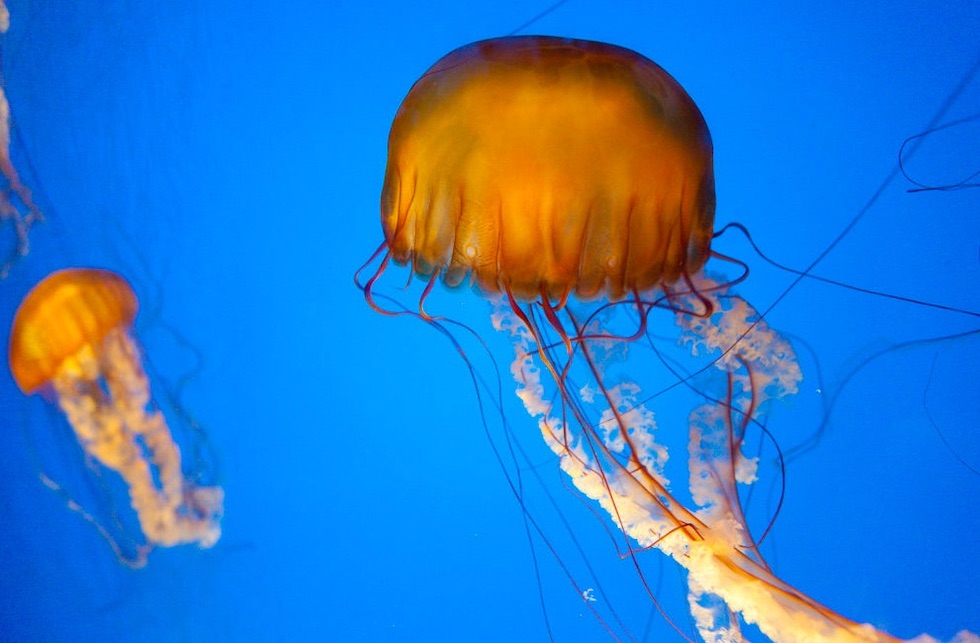Aquariums, Displays, and Jellyfish Culture Systems
Extensive Number of Wet and Dry Exhibits
“The Tenji team are problem solvers. For an endeavor the size, scope, and complexity of the California Academy of Sciences’ project, there were daily changes that Tenji was able to meet with creativity and speed. When issues arose, they regularly dove into tackle them. We endorse Tenji, Inc. for providing superior product, up-to-the- minute communication, sincere relations, well-calculated risk assessment, and the commitment to make it work right and look great the first time around. I encourage you to consider them for your live exhibits.”
– Christoper Andrews, Ph.D., Director, Steinhart Aquarium
OPPORTUNITIES
Home to one of the most biologically diverse and interactive aquariums on Earth, the California Academy of Sciences in San Francisco, CA houses over 900 unique species in a dramatic, architecturally distinctive facility designed by renowned architect Renzo Piano after the original building was damaged in the Loma Prieta earthquake. Distinguished by a living roof featuring three hills that reflect the iconic three hills around San Francisco, the Academy also features portals that allow copious amounts of natural light into the building and help to support the rainforest exhibit—the domed enclosure for Rainforests of the World, one of their signature attractions.
The Steinhart Aquarium, another signature attraction, is one of the top five most-visited aquariums in North America, and the Tenji team is proud to play a long-term role in sustaining that success. For seven years the Aquarium worked closely with Tenji to create 160 exhibits and life support systems for a wide range of habitats, ranging from coral exhibits and jellyfish culture systems to living environments for spiders, lizards, and bats.
CHALLENGES
- The Academy’s location in the seismic zone presents very specific engineering considerations the Tenji team must take into account.
- The wide variety of species housed within the Steinhart require an extensive array of complex life support systems—for culture, feeding, quarantine, and more—that must be easy to clean, corrosion-resistant, and minimize staffing requirements through well-planned LSS.
- One of the Steinhart’s most distinctive architectural features is the curvature of its walls. While guests love the feeling of being pulled into a current of diverse natural life, the exhibits rely heavily on plumbing systems, which naturally prefer hard planes. Finding ways to wrap pipes, pumps, and more around curved surfaces is the type of ongoing design and engineering challenge the Tenji team thrives on.
- Like any nonprofit institution of its reputation and longevity, the California Academy of Arts and Sciences watches its budgets closely and allocates resources wisely. Tenji is tasked with delivering complex projects on time and on budget while minimizing exhibit closures and other disruptions to admission.
THE TENJI TOUCH
One of our longest-running client collaborations, our work with the Steinhart feels like a true partnership. Well established communication, a mutual commitment to excellence and environmentalism, and a shared eagerness to push the boundaries of what is possible in exhibit design and construction characterize all of our many projects together. As the scope and size of the Steinhart has grown, the power of tenji to create clear courses of action from complex project requirements has been proven again and again.
Steinhart trusts Tenji with:
- essential life support systems and innovative quarantine and animal culture solutions. Given the enormous variety of species and limited amount of space, the Tenji engineering team prioritizes a modular approach, flexible uses of space, and thoughtfully designed, accessible, and easy-to-maintain equipment.
- environmentally friendly materials and operations. The new building, built to Platinum LEED standards, reflects the Steinhart’s mission-based commitment to ecological concerns. Tenji approaches each exhibit and habitat in the same spirit, designing each habitat and system for maximum energy and water conservation.
- space-saving innovations and ease of maintenance to reduce staffing requirements. Tenji engineers take care to minimize staffing and space requirements while always exceeding AZA standards for animal and plant comfort and safety.
- The Tenji team helps to realize the work of others as if it were our own, working hard to create the designer’s vision without compromise. As exhibits are sometimes created by artists without our extensive knowledge of animal husbandry or engineering this is not always easy, but we always make it work.
When the rebuilt Steinhart Aquarium re-opened to the public, the line for admittance stretched for miles. At Tenji, we are thrilled to be a part of an institution that means so much to so many.












